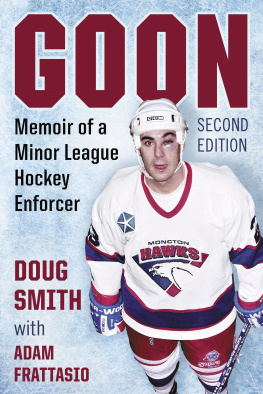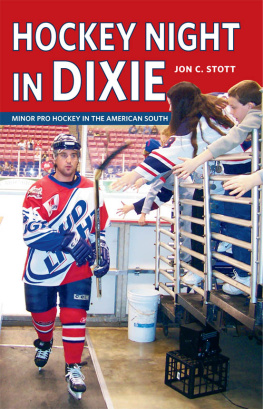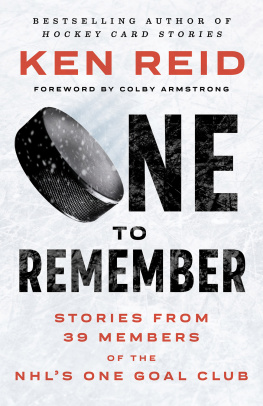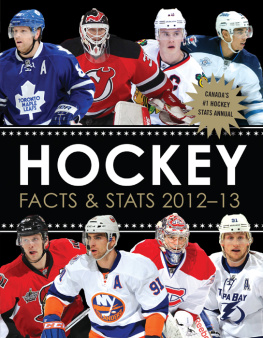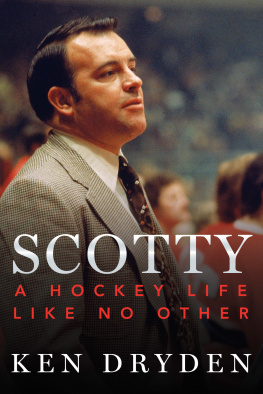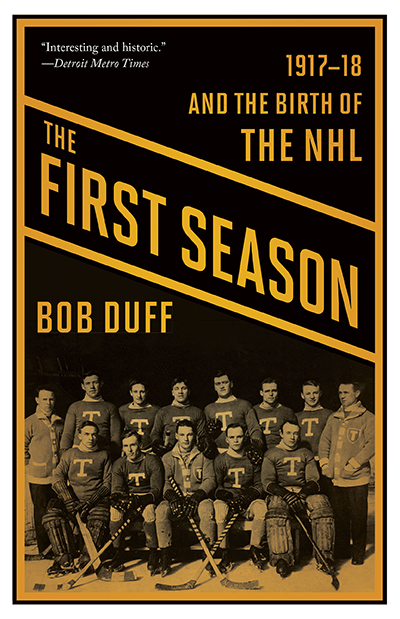THE FIRST SEASON:
191718 AND THE BIRTH OF THE NHL
THE FIRST SEASON :
1917 18 AND THE BIRTH OF THE NHL
BOB DUFF
BIBLIOASIS
WINDSOR, ONTARIO
Copyright Bob Duff, 2017
All rights reserved. No part of this publication may be reproduced or transmitted in any form or by any means, electronic or mechanical, including photocopying, recording, or any information storage and retrieval system, without permission in writing from the publisher or a licence from The Canadian Copyright Licensing Agency (Access Copyright). For an Access Copyright licence, visit www.accesscopyright.ca
or call toll free to 1-800-893-5777.
FIRST EDITION
Library and Archives Canada Cataloguing in Publication
Duff, Bob, author
The first season : 1917-18 and the birth of the NHL / Bob Duff.
Issued in print and electronic formats.
ISBN 978-1-77196-184-4 (softcover).--ISBN 978-1-77196-185-1 (ebook)
1. National Hockey League--History. I. Title.
GV847.8.N3D836 2017 796.96264 C2017-901961-9
C2017-901962-7
Edited by Daniel Wells
Copy-edited by Allana Amlin
Typeset by Chris Andrechek
Cover designed by Michel Vrana
Cover image: Eddie Livingstones Toronto Blue Shirts, 1915.




Published with the generous assistance of the Canada Council for the Arts, which last year invested $153 million to bring the arts to Canadians throughout the country, and the financial support of the Government of Canada. Biblioasis also acknowledges the support of the Ontario Arts Council (OAC), an agency of the Government of Ontario, which last year funded 1,709 individual artists and 1,078 organizations in 204 communities across Ontario, for a total of $52.1 million, and the contribution of the Government of Ontario through the Ontario Book Publishing Tax Credit and the Ontario Media Development Corporation.
INTRODUCTION
One man built the National Hockey League. Or to be more precise, the distaste for one man laid the groundwork for the foundation of what would become the NHL.
If you were seeking to explain Eddie Livingstone to someone from the modern era, you would describe a man who was part Harold Ballard, part George Steinbrenner, with a smattering of P.T. Barnum mixed in for good measure.
The youngest of three children, Livingstone played juvenile and intermediate hockey for Toronto St. Georges. Later, he worked as a referee and as a sportswriter for the Toronto Mail and Empire . He sometimes was called upon to pen articles on the games he officiated.
When his playing and reffing days came to an end, Livingstone entered management. Working with a number of local amateur teams, Livvy, as he was known, exhibited the unique skills of a hockey bird dog, showing a keen eye for talent and team-building. He guided the Toronto Rugby and Athletic Association to back-to-back Ontario Hockey Association senior titles in 1913 and 1914.
Emboldened by this success, Livingstone decided to try his hand at the pro game. In 1914, he acquired ownership of the Toronto Ontarios, one of two National Hockey Association teams based in the Queen City. The NHA was the forerunner to the NHL, a major pro loop with teams based in Quebec and Ontario. Immediately, Livingstone set out to shake things up, switching the teams uniforms from a gaudy orange to Kelly green and renaming his club the Toronto Shamrocks.

Almost instantly, Livingstone began to butt heads with the NHAs old guard. He became the arch nemesis of Montreal Wanderers owner Sam Lichtenhein. During the 191415 season, the Shamrocks were forced to forfeit a game to the Wanderers because brothers Hal and George McNamara had gone home to be at the bedside of their gravely ill father and Livingstone couldnt ice enough players to proceed with the game.
After consideration, Lichtenhein offered to reschedule the game, but once he realized his team might need those two points to win the league title, Lichtenhein reneged on his promise and clung tightly to the two points gained from the forfeit. Livingstone demanded that Lichtenhein honour his word, and Lichtenhein countered by seeking to have Livingstone barred from the NHA.
The two men would feud constantly over the next few years. At a league meeting prior to the 191617 season, Lichtenhein offered Livingstone $3,000 for his team if he would promise to go away. Livingstone countered by dangling $5,000 in front of Lichtenhein for his team if the Montreal owner was willing to take a hike.
One year earlier, Frank Robinson, owner of the NHAs Toronto Blueshirts, enlisted in the Canadian armed forces, headed to the Great War and sold his team to Livingstone prior to his departure, giving Livingstone controlling interest in both Toronto clubs in the league. He was told to sell one of the teams, but when the rival PCHA raided the Blueshirts and signed the majority of the roster, Livingstone traded his Shamrock players to the Blueshirts and folded the Shamrocks, leaving the NHA one team short.
Livingstone didnt seem to be happy unless he was fighting with someone. He battled over the cost of ice time at Torontos Arena Gardens, threatening to pull his team out of the city and move it to Boston.
Ever since he entered professional hockey, Eddie Livingstone has stirred things up, not only at the beginning of the season but all the way through it, the Ottawa Journal noted. The Toronto magnate has been the regular old pepper-sauce of pro hockey since he broke into the game. And he was just as hot stuff when he had a team in the OHA and when he was also managing football clubs in the ORFU.
Shy of players due to the Great War, during the 191617 season the NHA enlisted a team comprised entirely of enlisted soldiers known as the 228th Battalion, who were also scheduled to play out of Toronto. But this plan went up in smoke mid-season when the 228th, also known as the Northern Fusiliers, received their orders to ship overseas and enter combat.
Left with an odd number of teams, the NHA owners decided the best solution was to cut both Toronto teams, and they suspended operations of Livingstones Blueshirts.
Livvy was livid and filed a court injunction against the NHA to prevent the leagues disposing of the Toronto franchise without his consent, but the move to remove Livingstone had its supporters, including the Toronto Globe . Without naming Livingstone, they wrote of his demise with gleeful delight, as one would welcome the breaking of a fever or the departure of unpleasant weather.
The end of professional hockey in Toronto is not regretted by the well-wishers of sport, the Globe wrote in an editorial. Whether that end is temporary or permanent depends on the temporary or permanent exclusion of the obnoxious element that is responsible for the present situation.
From all accounts, the active clubs in the NHA do not mean to ever again permit the condition that offended the public to have any connection with the game in the future.


